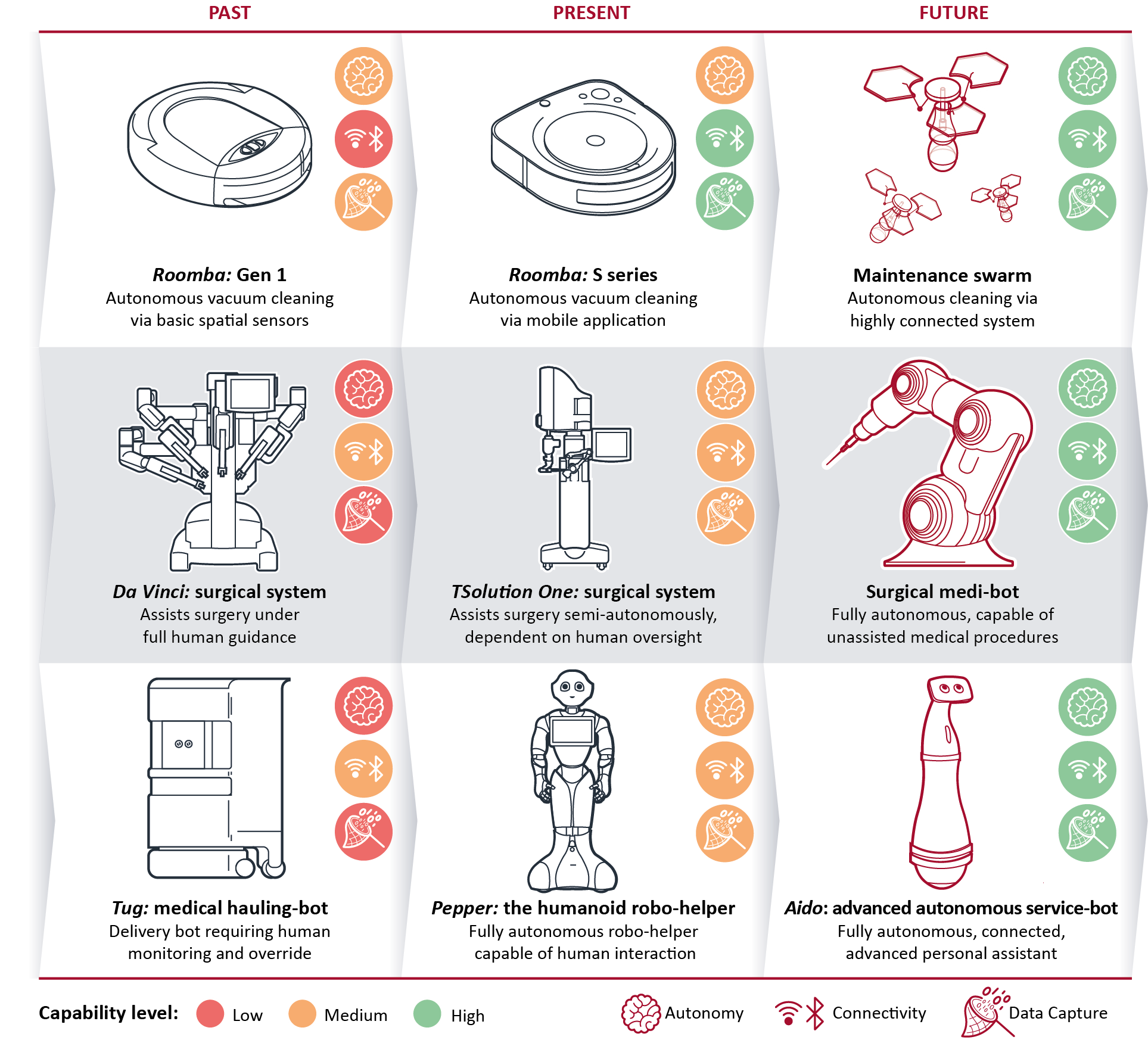Invasive Technology Disrupts the Everyday: Robo-helpers help themselves to data

As robotic technologies advance, we will begin to see a growing number of innocently branded, friendly-faced robo-helpers in a growing number of environments. These increasingly autonomous devices will take on jobs and tasks typically undertaken by humans raising some interesting and complex questions for information security and risk.
With the development and application of robotics rapidly increasing across the world we are seeing a significant uptake in devices that can be referred to as robo-helpers. These semi to completely autonomous devices will undertake tasks traditionally performed by humans in a variety of industries, sectors, environments and locations.
As robo-helpers increasingly become commonplace in society but also used in offices, homes and shops we will also begin to see a number of drawbacks and risks associated with this new world of autonomous inhabitants.
Medical sector:
In light of recent developments surrounding the Coronavirus the number of headlines and articles discussing the use of Robo-helpers, assistive and ubiquitous robotics to carry out tasks is growing. China has begun using such devices to assess those suffering from the virus, as a method for minimising exposure and managing the healthcare burden placed on doctors and other medical staff ( this is something not constrained to China as we are also seeing examples of the use of such robo-helpers in the Western world).
- Privacy concerns, the compromise of confidential information and the theft of intellectual property will become a growing risk as attackers begin taking advantage of vulnerabilities in robo-helpers. A growing familiarity and even social bonding with robo- helpers could become a growing risk to cyber and information security as these devices are used to capture information from vulnerable individuals, including the sick, elderly and even technologically naïve. (There have now been a number of cases in which individuals have entered into contractual relationships with robotic devices, a trend that may in the future pose a considerable risk with legal and regulatory aspects playing a major role.)
- Another major concern with robo- helpers comes back to trust and vulnerable individuals. As a growing epidemic of loneliness takes hold and with an ageing population the world over, robotic devices will begin to fill that social interaction for many individuals. With this, the likely rise of malicious social engineering attacks will take place, with robo-helpers’ friendly faces and support functions being used to take advantage of targets through ransomware, vishing, and other similar attacks. Robo-helpers may very well pose a growing threat as they become more and more a part of our everyday lives.

This blog is one part in a series of blogs based on the Threat Horizon 2022 report. In the coming weeks, we will be discussing the three themes and nine threats covered in the report.
Find out more about Threat Horizon 2022: Digital and Physical Worlds collied here >
ISF Members can download the Threat Horizon 2022: Digital and physical worlds collide report here.
